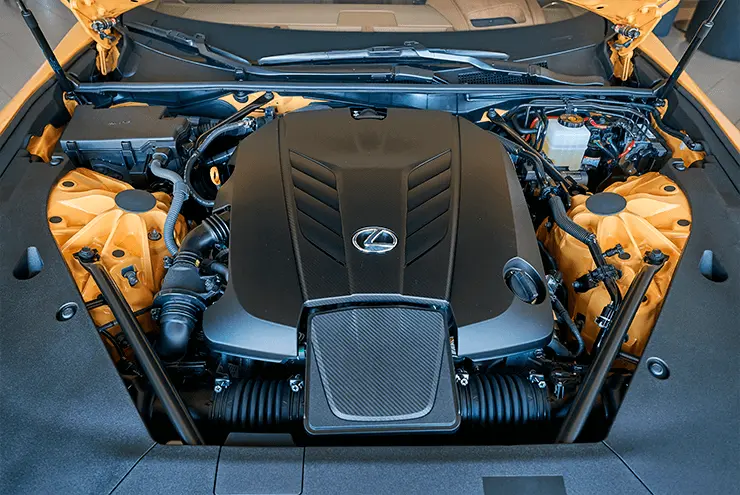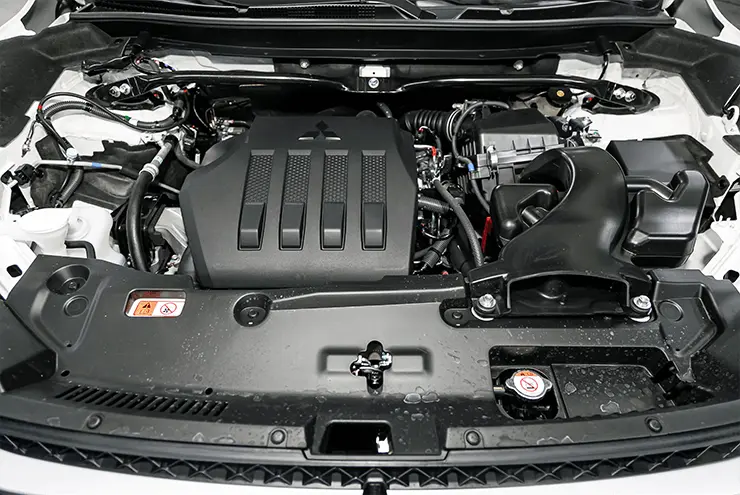Car Engine Types

Howdy, fellas! You’ve heard about different engine configurations in your cars, right? Yeah, these digits and letters may seem confusing for those who aren’t petrolheads. While buyers’ needs have been evolving and some prefer efficiency over performance, it’s hard to find an engine type that will suit everybody. That’s why automakers have contributed to developing a wide diversity of car engine types. We’re breaking them down in this blog and explaining what’s what.
Brief Overview of Car Engine Types

In general, all car engine types can be subdivided into three following groups:
- internal combustion engines (ICE),
- hybrid powertrains,
- and electric motors.
Most cars used to be gas-fed until the 2000s. The global resources are exhaustible, and that accounted for a hike in the popularity of alternatively-powered vehicles, which have finally become mass-market not so long ago. On top of that, many automakers will cease to produce gas-powered cars in the near future. That’s going to cut exhaust fumes and reduce atmospheric pollution caused by it.
All technical wizardry that’s moving your car happens inside your engine bay. If it’s an ICE, your vehicle moves because of small controlled explosions of air mixed with the fuel inside your combustion chamber.

The hybrid powertrain is aided by electric motors or batteries (or both) charging during your driving. Contrary to it, electric engines only accumulate and transform electrical energy. Below, we’ll investigate what is specific about different types of ICE motors that are still the most common power sources in cars.
Car Engine Types According To Number of Strokes

According to the number of strokes, there are only two common engine types: two and four-stroke engines. Four-stroke motors are more widespread since two-stroke motors were a feature of older vehicles.

The combustion cycles for the first type consist of 4 actions (moves) that pistons and valves perform: intake, compression, combustion, and exhaust. In contrast, pistons inside two-strokers perform only two moves (up and down) to complete a combustion cycle. In most modern cars, you can find four-stroke engines, from Audi A4s to more eccentric Porsches or Ferraris.
Car Engine Types According To Ignition Method

Ignition methods are subdivided into two, following the same pattern as the number of strokes. Spark plugs are responsible for igniting the mixture inside a combustion chamber. It’s typical for all gas engines. However, spark plugs will perfectly fit into machines motivated with CNG, hydrogen, nitromethane, and even autogas (LPG).

The second type is compression ignition, found in diesel engines. These controlled explosions occur because of high temperatures leading to extreme compression rates, so the air-fuel mixture can ignite without spark plugs.
Car Engine Types According To Air Intake Methods

Yeah, you aren’t mistaken. There are even more types of car engines to be covered. Many manufacturers deal with different air intake methods. In short, all motors can be either naturally aspirated or with forced air induction. Nonetheless, both types require a brief explanation.
Naturally aspirated motors are seen in high-performance vehicles since they don’t have a so-called ‘turbo lag’ when a gearbox doesn’t catch up with engine revs. Such engines rely on atmospheric pressure within the bay.

Another air intake method lies in forced air induction. That’s designed to increase the motor’s potential or even balance its efficiency. Turbocharged or supercharged: these are your options regarding forced air induction. What’s the difference between them?

The latter is directly connected to an engine via a belt, and it’s a less eco-friendly solution than a turbo. Turbines aren’t mated to a power source, and they only help to improve air induction. The number of turbines can vary from one to four. Notably, several BMW models are accompanied by quad-turbo engines, while Mercedes-Benz usually has bi-turbo configurations. Ordinary cars like Fords use a single turbine on some models.
Car Engine Types According To Cylinder Layout

Car engine types are also classified according to the cylinder layout. There are several layouts you can find a car with:
- inline engines,
- straight,
- V-shaped,
- W-shaped,
- Opposite (also known as boxer or flat),
- and Rotary (Mazda lovers, here’s your turn!).
Inline Configuration

Inline car engines are the most popular of all. Cylinders are arranged in a perpendicular line to the car. It can be found on many autos, from commuters like Toyota Corolla to the top-tier models like the Mercedes-AMG A 35.
Straight Configuration

Straight configurations are less common but still can be found among older cars and newer BMWs with these burly straight-six motors. This car engine type is characterized by the linear arrangement of cylinders parallel to the car’s body (from the front to the end).
V-Configuration

V-shaped engines are designated for more powerful cars in which performance or towing capacity comes first. It allows placing more cylinders within a smaller place. Two banks of cylinders are arranged at an angle that resembles a Latin letter ‘V’ when viewed from the front. Both rows are facing outwards and are connected with a single crankshaft at the ‘base’ of the ‘V.’
W-Configuration

W-shaped engines aren’t common. Their roots hark back to one of the earliest aircraft, namely Louis Blériot’s ‘XI’, which made him famous for flying across the English Channel.
The first iteration of such an engine has a single crankshaft for three rows of cylinders placed in a typical W-shape.
The second is even more complicated, where four banks of cylinders are connected to the same crankshaft. Such variations are rarely seen on modern cars except for some premium models made by Volkswagen AG like the Bentley Continental GT and Audi A8.
Flat Engines

Only Porsche and Subaru still stick to making cars with flat engines. Such a layout presupposes a horizontal position of cylinders being opposed to each other. That said, a center of gravity is lower than in a standard V-configuration engine, so handling will be better.
Rotary Engine

Rotary is the rarest among car engine types. Patented by Felix Wankel, a rotary engine doesn’t use pistons. Instead, it has a triangular rotor that rotates inside a single cylinder eccentrically. A few manufacturers like Mazda and now-defunct NSU have been keen on making such engines.
Final Thoughts
We hope this complete breakdown of car engine types will help you deepen your understanding of the basic principles manufacturers follow when designing a vehicle for you. The easiest way to learn the exact engine type and specifications is by getting a window sticker by VIN. Alternatively, use a car VIN lookup to reveal all the details about the motor.
Knowing about an engine and a drivetrain will give you peace of mind and contribute to your final decision on which of the abovementioned motors is right for you. Hopefully, you can find a vehicle with any of these car engine types on AutoBidMaster. Each lot page provides substantial information about the vehicle’s characteristics. If you’ve already found one to your taste, make sure you have an account with us to be ready to bid on it. Sign up if you haven’t been our member yet, upload a copy of your government-issued ID, place a refundable security deposit, and grab the right membership. Congratulations, you’re all set! Feel free to reach out to us at +1 (503) 298-4300 (6:00 AM – 4:00 PM Pacific Standard Time, Monday through Friday) if something is unclear. Also ClearVin instantly provides Emission Test Records Check by VIN.
- The Advantages of Salvage Car Parts - November 3, 2025
- Buying Salvage Cars: What to Expect on Auction Day - May 22, 2025
- Is Buying a Hail Damage Car Worth It? A Detailed Guide - December 2, 2024